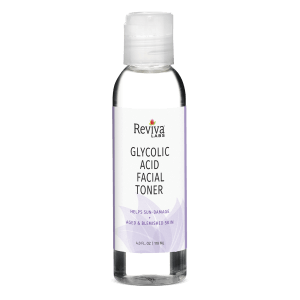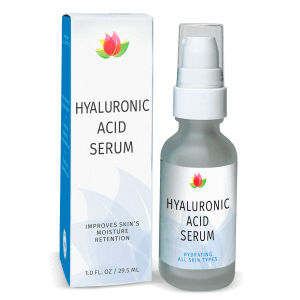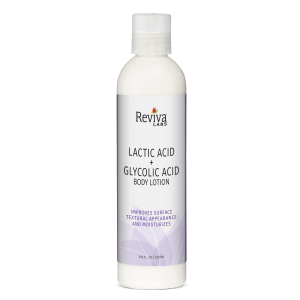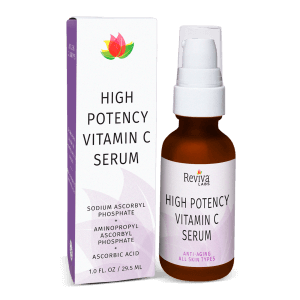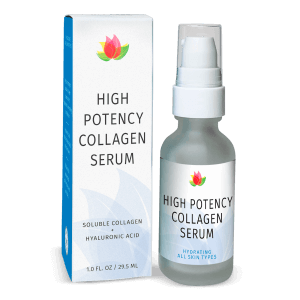Ingredients, Reviva Labs, Skin Care
The Best Acids for Hydrated Skin
When people think about acids in skincare, they often associate them with exfoliation or brightening. However, certain acids are powerful allies when it comes to maintaining skin hydration. These moisture-boosting acids can improve the skin’s ability to retain water, leading to a plumper, smoother, and healthier complexion. Whether you’re dealing with dry skin or simply want to keep your skin looking radiant and hydrated, the right acids can make all the difference.
Hyaluronic Acid: The Hydration Superstar
Hyaluronic acid is probably the most well-known hydrating acid, and for good reason. This humectant works by attracting water to the skin and holding onto it. One gram of hyaluronic acid can hold up to six liters of water, making it incredibly effective for hydration. This ability to retain water makes the skin look fuller, minimizes the appearance of fine lines, and helps prevent moisture loss throughout the day.
While hyaluronic acid naturally occurs in the skin, its levels decrease with age, making external application a crucial part of any hydrating skincare routine. It can be found in serums, moisturizers, and even cleansers. When layered under other products, it acts as a hydration magnet, ensuring that any moisture your skin absorbs stays locked in.
Lactic Acid: Gentle Exfoliation with Hydration Benefits
Though lactic acid is often thought of as an exfoliant, it’s one of the few acids that can exfoliate and hydrate at the same time. This alpha hydroxy acid (AHA), derived from milk or fermented plants, removes dead skin cells, allowing fresher, more hydrated skin to surface. What makes lactic acid unique is its larger molecular size, which makes it less irritating than other AHAs, making it suitable for sensitive or dry skin types.
But beyond exfoliation, lactic acid improves the skin’s natural moisture factor (NMF). NMFs are molecules that help keep the outer layer of the skin hydrated. This dual action—exfoliating and hydrating—makes lactic acid an excellent choice for those looking to improve skin texture while enhancing hydration.
Polyglutamic Acid: The Hyaluronic Acid Booster
Polyglutamic acid is a rising star in the skincare world, often hailed as an even better hydrator than hyaluronic acid. Derived from fermented soybeans, it can hold up to four times more water than hyaluronic acid. This impressive water retention ability makes it a potent ingredient for deeply hydrating the skin.
What’s fascinating about polyglutamic acid is that it not only hydrates but also helps to increase the natural levels of hyaluronic acid in the skin. By doing so, it acts as a booster, enhancing the effects of other hydrating ingredients. It’s often used in conjunction with hyaluronic acid to lock in moisture and create a smooth, hydrated skin surface.
Glycolic Acid: Exfoliating for Better Hydration
Glycolic acid, another alpha hydroxy acid, is widely known for its exfoliating properties. Its small molecular size allows it to penetrate deeper into the skin, making it one of the most effective AHAs. By removing dead skin cells on the surface, glycolic acid clears the way for other hydrating products to absorb more efficiently. This not only improves hydration but also helps the skin maintain a smooth texture.
While glycolic acid’s main function is exfoliation, its ability to enhance hydration should not be overlooked. By keeping the skin barrier free of dead cells, it allows moisturizers and serums to penetrate better, ultimately leading to more hydrated and supple skin.
Malic Acid: A Gentle, Hydrating Exfoliant
Derived from apples and other fruits, malic acid is another alpha hydroxy acid that can support both exfoliation and hydration. It has a larger molecular size than other AHAs, which means it works more slowly and is less likely to cause irritation. This makes it ideal for those with dry or sensitive skin who still want the benefits of chemical exfoliation.
Malic acid is often used in combination with other AHAs or BHAs (beta hydroxy acids) to create a more balanced formula that exfoliates without stripping the skin of moisture. Its gentle nature allows it to help the skin retain hydration, promoting a healthier, more balanced complexion.
Mandelic Acid: Hydration for Sensitive Skin
Mandelic acid is a lesser known but highly effective alpha hydroxy acid. Derived from bitter almonds, it has a larger molecular structure than glycolic acid, which means it penetrates the skin more slowly. This slow penetration makes mandelic acid less likely to cause irritation, making it ideal for sensitive skin types.
Like other AHAs, mandelic acid helps with exfoliation, but it also has hydrating benefits. By clearing away dead skin cells, it allows the skin to better absorb moisture. It’s a great option for those looking to improve skin texture while ensuring that their skin stays hydrated and comfortable.
Salicylic Acid: Balancing Oil and Hydration
Salicylic acid is typically known for its acne-fighting abilities, but it also has a role in hydration. As a beta hydroxy acid (BHA), it’s oil-soluble, meaning it can penetrate deep into the pores to clear out excess sebum and dead skin cells. While it’s primarily used to address oily or acne-prone skin, salicylic acid can also help maintain hydration by balancing oil production.
By keeping pores clear, salicylic acid allows the skin to breathe and better retain moisture. It can also be combined with hydrating ingredients to ensure that skin stays balanced and hydrated, even while targeting blemishes.
The Importance of Hydration in Skincare
Hydrated skin is healthy skin. Proper hydration ensures that the skin barrier functions optimally, protecting against environmental stressors and keeping irritants at bay. When the skin is dehydrated, it becomes more prone to damage, redness, and even breakouts. Incorporating hydrating acids into your skincare routine can help ensure that your skin maintains its moisture balance, preventing dryness and promoting overall skin health.
According to a study published in the Journal of Clinical and Aesthetic Dermatology, proper hydration can reduce the appearance of fine lines and wrinkles by up to 40%. This statistic highlights the importance of maintaining adequate moisture levels in the skin, especially as we age.
How to Incorporate Hydrating Acids into Your Routine
The best way to incorporate hydrating acids into your skincare routine is to use them in products that complement your existing regimen. For instance, hyaluronic acid serums can be layered under moisturizers to boost hydration. Lactic and glycolic acids can be used in exfoliating treatments a few times a week, followed by rich moisturizers to lock in hydration.
It’s also important to remember that while acids can be incredibly hydrating, they should be used with caution, especially if you have sensitive skin. Always introduce new acids slowly and monitor how your skin responds. Combining acids with other hydrating ingredients like ceramides, glycerin, or squalane can enhance their moisturizing effects without causing irritation.
Final Thoughts on Hydrating Acids
Acids are often associated with exfoliation, but they play a crucial role in hydration too. By incorporating the right acids into your skincare routine, you can help your skin retain moisture, improve texture, and achieve a radiant glow. From the well-known benefits of hyaluronic acid to the emerging potential of polyglutamic acid, there’s a hydrating acid suitable for every skin type and concern. By making these acids a staple in your routine, you’ll be well on your way to healthier, more hydrated skin.

